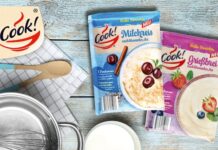Hindustan Tin Works (HTW), enjoys a commanding position in the Indian metal packaging segment. Acquired by Delhi-based Bhatia family in 1977, the company has shown a robust growth ever since with orders from Nestle, GSK, and many others.
 We met Saket Bhatia, senior vice president, to discuss the opportunities that the Indian market offers to the metal container industry. According to Bhatia, metal packaging accounts for about 5% of the total packaging market in India while globally this segment occupies about 10% of the packaging market, which leaves huge scope of growth for the segment in India. HTW itself has grown from a small scale unit producing Dalda ghee (clarified butter) tin cans to one of India’s biggest metal packaging companies with an annual turnover of over Rs. 300 crore.
We met Saket Bhatia, senior vice president, to discuss the opportunities that the Indian market offers to the metal container industry. According to Bhatia, metal packaging accounts for about 5% of the total packaging market in India while globally this segment occupies about 10% of the packaging market, which leaves huge scope of growth for the segment in India. HTW itself has grown from a small scale unit producing Dalda ghee (clarified butter) tin cans to one of India’s biggest metal packaging companies with an annual turnover of over Rs. 300 crore.
Positive growth strategy
Bhatia pointed out that for input suppliers to diversify into a downstream segment of the industry is the logical direction to move forward and so it made sense to acquire HTW four decades ago. It also meant that HTW’s supply sources were largely secure due to the owners’ traditional interest in tinplate trading, with continued strong relations with Tata Tin Plate as well as other global suppliers. This helped the company become the undisputed leader in the Indian metal packaging market.

peas, corn, fruits, vegetables, milkbased foods like ghee, condensed milk, beverages and juices
Today, 90% of the company’s products are for the food sector where HTW accounts for around 50% of the specific sub-segments that it supplies to. The company doesn’t supply to certain sub-segments like large tin cans for ghee or edible oil as these are nowadays largely confined to the small scale sector, which is no longer compatible with its capital-intensive operations, where scale and premium pricing determine product development strategies. HTW is also a major exporter, supplying components and printed tin plate to around 30 countries across the world. Some of the major segments that the company supplies to are baby food, processed food like green peas, corn, fruits, vegetables, milk-based foods like ghee, condensed milk, beverages and juices.
Food grade coating and production processes
The company benchmarks itself with global competitors in terms of quality compliance as it has done many upgradations in accordance with the standards set by the US FDA and other global regulatory bodies. HTW has its own printing and coating lines wherein it prints brand designs and does the internal food grade coating, working closely with the customers to understand the potential shelf-life of their products. The company has also invested substantially in its processes and upgraded its machinery.
Tin packaging is far more critical than other forms of packaging as it is direct packaging wherein the food product goes directly into the cans. Hence, the quality of the internal coating must be strictly maintained. HTW has advanced coating lines for the purpose. The advantage of a tin can is the long shelf life it offers. Products, when packaged well, can be used for up to two years or beyond without any need for refrigeration.
HTW has four Crabtree double color printing lines equipped with UV curing setup that they have imported from UK. It is also the first to offer UV printing solutions in metal packaging in India. A critical part of the process is can-making for which HTW has imported advanced machines from Swiss can-maker Soudronic that can weld up to 400 cans per minute. The process starts with the procurement of the tin plates, followed by printing and coating. At HTW’s component shop department, lids for the top and bottom of the cans are produced. The cans are delivered to the clients without sealing the bottom lids, to allow them to fill the cans upside down and seal them before they are sent to the distribution chain.











